
PAVE PAWS is a complex Cold War early warning radar and computer system developed in 1980 to "detect and characterize a sea-launched ballistic missile attack against the United States". The first solid-state phased array deployed used a pair of Raytheon AN/FPS-115 phased array radar sets at each site to cover an azimuth angle of 240 degrees. Two sites were deployed in 1980 at the periphery of the contiguous United States, then two more in 1987–95 as part of the United States Space Surveillance Network. One system was sold to Taiwan and is still in service.
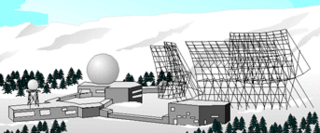
The RCA 474L Ballistic Missile Early Warning System was a United States Air Force Cold War early warning radar, computer, and communications system, for ballistic missile detection. The network of twelve radars, which was constructed beginning in 1958 and became operational in 1961, was built to detect a mass ballistic missile attack launched on northern approaches [for] 15 to 25 minutes' warning time also provided Project Space Track satellite data.
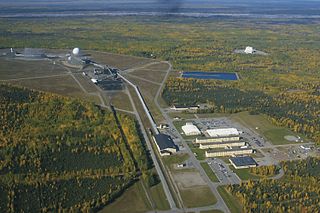
Clear Space Force Station is a United States Space Force radar station for detecting incoming ICBMs and submarine-launched ballistic missiles to NORAD's command center and to provide Space Surveillance data to the United States Space Force. Clear's AN/FPS-123 Upgraded Early Warning Radar is part of the Solid State Phased Array Radar System (SSPARS) which also includes those at Beale AFB, Cape Cod Space Force Station, RAF Fylingdales and Thule Site J. The "historic property" was one of the Alaska World War II Army Airfields and later a Cold War BMEWS site providing NORAD data to Colorado's BMEWS Central Computer and Display Facility (CC&DF).

The United States Space Force's 10th Space Warning Squadron, is a missile warning unit located at Cavalier Space Force Station, North Dakota operating the AN/FPQ-16 Perimeter Acquisition Radar Attack Characterization System.

Fort Fisher Air Force Station was a United States Air Force installation located on the Atlantic coast 0.8 miles (1.3 km) southwest of Kure Beach, North Carolina. Its primary mission was as a radar complex. It was closed on 30 June 1988 by the Air Force, and turned over to the Federal Aviation Administration (FAA).
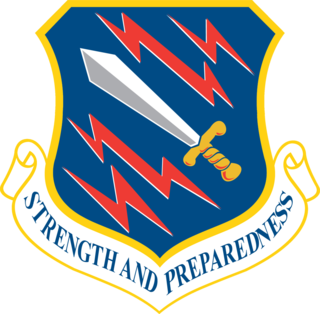
The 21st Wing is an inactive wing of the United States Air Force.

The 9th Space Division is an inactive United States Air Force organization. Its last assignment was with Air Force Space Command, being stationed at Patrick Air Force Base, Florida. It was inactivated on 1 October 1991.

The 13th Space Warning Squadron (13SWS) is a missile warning unit assigned to the United States Space Force and located at Clear Space Force Station 5 miles (8 km) south of Anderson, Alaska
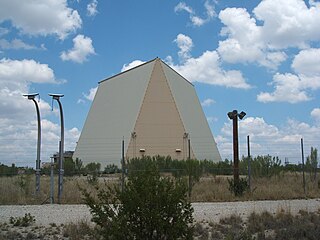
Eldorado Air Force Station located 35 miles (56 km) south of San Angelo, Texas was one of the four unique AN/FPS-115 PAVE PAWS, early-warning phased-array radar systems. The 8th Space Warning Squadron, 21st Space Wing, Air Force Space Command operated at Eldorado Air Force Station.

Cape Cod Space Force Station is a United States Space Force station located in the northwest corner of Joint Base Cape Cod, United States, on Flatrock Hill in Bourne, Massachusetts. Cape Cod Space Force Station began construction in 1976 as Cape Cod Missile Early Warning Station and was renamed Cape Cod Air Force Station in 1982, before assuming its current name in 2021.

The 6th Space Warning Squadron is located at Cape Cod Space Force Station, in Sagamore, Massachusetts, United States. It operates the PAVE PAWS radar to watch for missiles launched toward North America. The squadron is assigned to Space Delta 4. The squadron was first organized in October 1979 as the 6th Missile Warning Squadron

The 7th Space Warning Squadron (SWS) is the premier Space Domain Awareness sensor on the West Coast. The unit was originally established to guard the U.S. West Coast against sea-launched ballistic missiles from the eastern outskirts of Beale Air Force Base approximately 8 miles (13 km) east of Marysville, California. 7 SWS is a geographically separated unit of Space Delta 4.
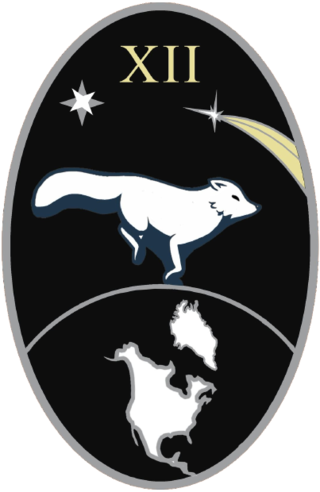
The 12th Space Warning Squadron is a United States Space Force ground-based radar used for missile warning, missile defense, and space situation awareness, stationed at Pituffik Space Base, Greenland.

The United States Air Force's 8th Space Warning Squadron is an Air Force Reserve missile warning unit located at Buckley Space Force Base, Colorado. The 8th works alongside its active duty counterpart, the 2d Space Warning Squadron, on the Defense Support Program and Space-Based Infrared System programs.
Thomasville Air Force Station is a closed United States Air Force General Surveillance Radar station. It is located 1.9 miles (3.1 km) north-northwest of Thomasville, Alabama. It was closed in 1969.

Charleston Air Force Station is a defunct Air Force Station that opened in 1952 and closed in 1980. It was located in Charleston, Maine and is the site of a radar station and other buildings. After closure, it was redeveloped into a juvenile jail for the state of Maine.

The 213th Space Warning Squadron of the Alaska Air National Guard provides early warning of Intercontinental ballistic missiles and Submarine-launched ballistic missiles to the Missile Correlation Center of North American Aerospace Defense Command. The squadron is a geographically separated unit assigned to the 168th Wing at Eielson Air Force Base.
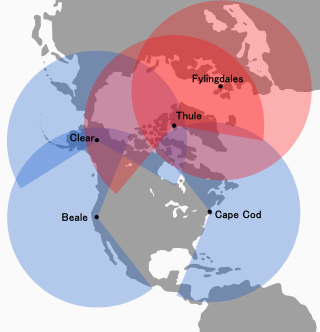
The Solid State Phased Array Radar System is a United States Space Force radar, computer, and communications system for missile warning and space surveillance. There are SSPARS systems at five sites: Beale Air Force Base, CA, Cape Cod Space Force Station, MA, Clear Space Force Station, AK, RAF Fylingdales, UK, and Pituffik Space Base, Greenland. The system completed replacement of the RCA 474L Ballistic Missile Early Warning System when the last SSPAR was operational at then-Clear Air Force Station in 2001.

The Missile Warning Center (MWC) is a center that provides missile warning and defense for United States Space Command's Combined Force Space Component Command, incorporating both space-based and terrestrial sensors. The MWC is located at Cheyenne Mountain Space Force Station.

Eglin AFB Site C-6 is a United States Space Force radar station which houses the AN/FPS-85 phased array radar, associated computer processing system(s), and radar control equipment designed and constructed for the U. S. Air Force by the Bendix Communications Division, Bendix Corporation. Commencing operations in 1969, the AN/FPS-85 was the first large phased array radar. The entire radar/computer system is located at a receiver/transmitter building and is supported by the site's power plant, fire station, 2 water wells, and other infrastructure for the system. As part of the US Space Force's Space Surveillance Network its mission is to detect and track spacecraft and other manmade objects in Earth orbit for the Combined Space Operations Center satellite catalogue. With a peak radiated power of 32 megawatts the Space Force claims it is the most powerful radar in the world, and can track a basketball-sized object up to 22,000 nautical miles (41,000 km) from Earth.


















